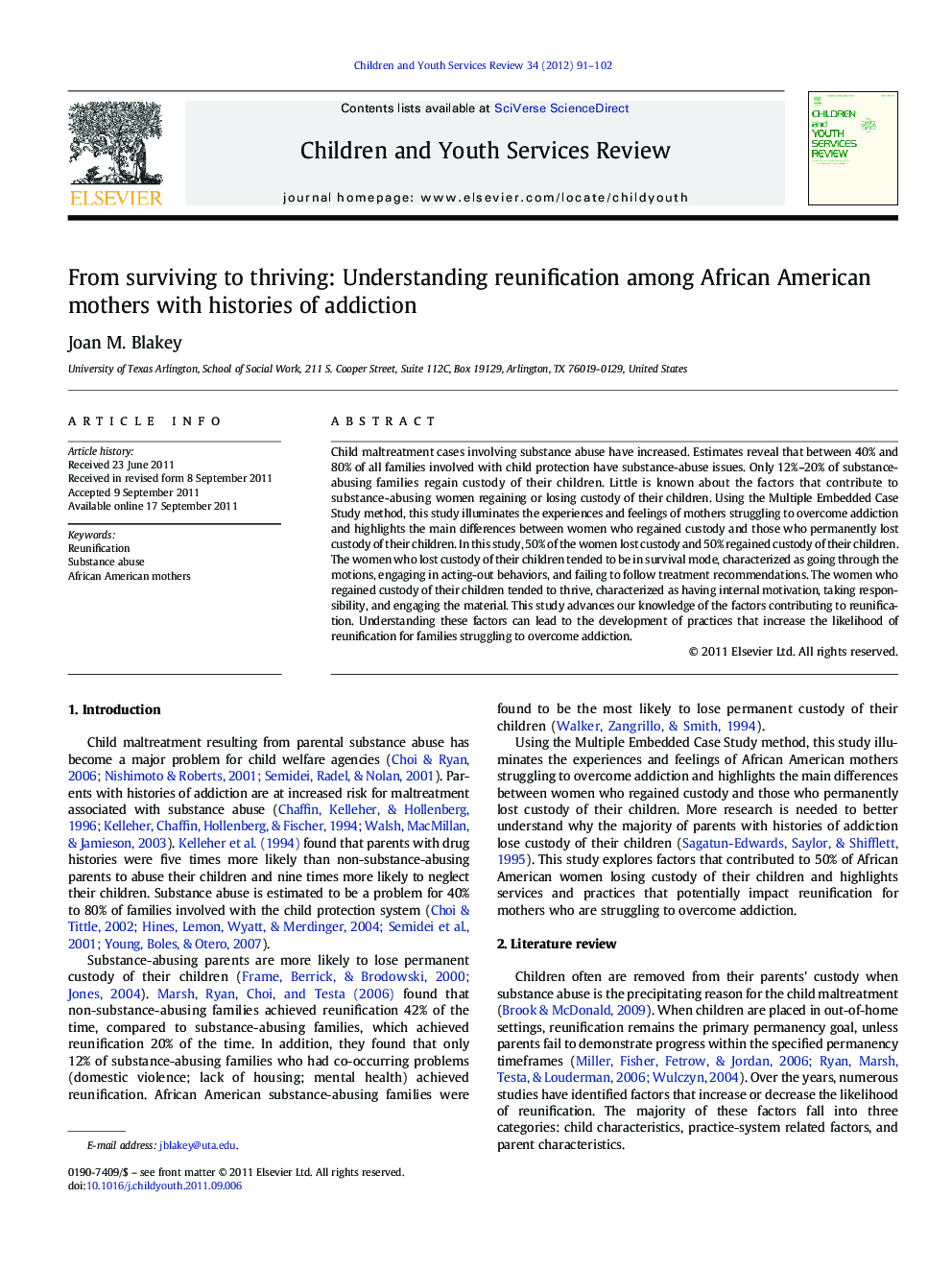| Article ID | Journal | Published Year | Pages | File Type |
|---|---|---|---|---|
| 346715 | Children and Youth Services Review | 2012 | 12 Pages |
Child maltreatment cases involving substance abuse have increased. Estimates reveal that between 40% and 80% of all families involved with child protection have substance-abuse issues. Only 12%–20% of substance-abusing families regain custody of their children. Little is known about the factors that contribute to substance-abusing women regaining or losing custody of their children. Using the Multiple Embedded Case Study method, this study illuminates the experiences and feelings of mothers struggling to overcome addiction and highlights the main differences between women who regained custody and those who permanently lost custody of their children. In this study, 50% of the women lost custody and 50% regained custody of their children. The women who lost custody of their children tended to be in survival mode, characterized as going through the motions, engaging in acting-out behaviors, and failing to follow treatment recommendations. The women who regained custody of their children tended to thrive, characterized as having internal motivation, taking responsibility, and engaging the material. This study advances our knowledge of the factors contributing to reunification. Understanding these factors can lead to the development of practices that increase the likelihood of reunification for families struggling to overcome addiction.
► I highlight differences between women who regained and lost custody of their children. ► Fifty percent of women lost custody and 50% regained custody of their children. ► Women who lost custody of their children tended to remain in survival mode. ► Women who regained custody of their children tended to thrive. ► Reunification was dependent on women's readiness to work towards lasting change.
